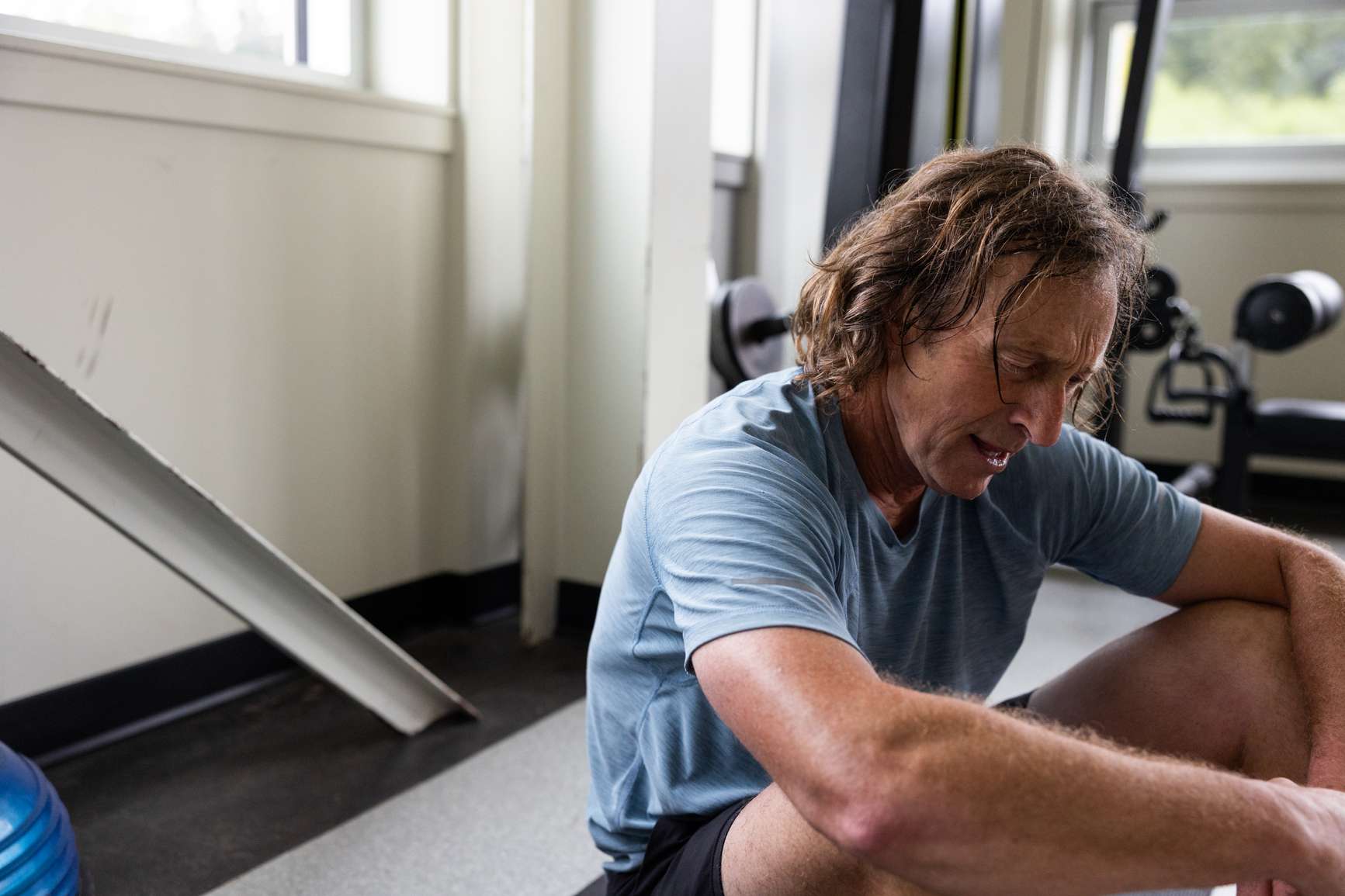Tufts Athletes Were Recently Hospitalized with Rhabdo—When Can an Intense Workout Put Your Health at Risk? Symptoms of rhabdo include severe muscle pain, cola-colored pee, and feeling weak or tired

Last week, nine lacrosse players at Tufts University were hospitalized with a rare—and potentially deadly—muscle condition called rhabdomyolysis, or rhabdo for short
- Last week, nine lacrosse players at Tufts University were hospitalized with a rare—and potentially deadly—muscle condition called rhabdomyolysis.
- Rhabdomyolysis, or rhabdo for short, stems from a breakdown in damaged muscle and is usually caused by strenuous exercise.
- Symptoms of rhabdo include severe muscle pain, cola-colored pee, and feeling weak or tired.
Tufts University announced over the weekend that nine members of its lacrosse team had been hospitalized last week with a serious and rare muscle condition called rhabdomyolysis, according to multiple reports.
The players, who have since been released from the hospital, became ill after a 45-minute workout on Sept. 16 led by a Navy SEAL. About 50 players participated in the workout, the details of which haven’t been publicly disclosed.
“We want to express how grateful we are that the team members have returned to good health,” Tufts President Sunil Kumar, School of Arts and Sciences Dean ad interim Barbara Brizuela, and School of Engineering Dean Kyongbum Lee wrote in an email to the university, per The Tufts Daily. “We commend the team’s resilience, admire how they cared for one another during a difficult time, and thank their families for their unwavering support.”
Tufts is appointing external, independent investigators to review how the players contracted rhabdomyolysis, the publication reported.
This isn't the first time an athletic team has been connected to rhabdomyolysis. Thirteen members of the University of Iowa's football team were hospitalized with the condition in 2011 following a particularly grueling workout.
However, the news about the Tufts lacrosse players has sparked a fresh wave of questions about rhabdomyolysis, known as rhabdo for short. Here’s what to know about this potentially dangerous condition.

Rob and Julia Campbell / Stocksy
What Is Rhabdo?
Rhabdo is a “complex disease process” that stems from the breakdown of damaged skeletal muscle, Joshua Scott, MD, a primary care sports medicine physician at Cedars-Sinai Kerlan-Jobe Institute in Los Angeles, told Health.
The condition is uncommon—about 25,000 cases are reported in the U.S. each year—but it can be deadly. People with rhabdo are also at risk of developing dangerous heart rhythms, seizures, kidney damage, and permanent disability.
Why Can Rhabdo Develop After Intense Exercise?
It's important to note that rhabdo doesn’t just happen after intense exercise—it’s also linked to heat exposure and direct trauma, like a crush injury from a fall. However, it's usually associated with strenuous exercise.
Rhabdomyolysis causes a potentially deadly breakdown in the muscles. “The muscle breakdown causes the release of intracellular components such as myoglobin, creatine kinase, and certain electrolytes,” Scott said. Unfortunately, those substances can lead to organ damage. “This can produce a life-threatening condition, resulting in kidney failure and electrolyte imbalances,” he added.
Rhabdo can develop regardless of a person's fitness level, and it can also occur after someone has participated in an activity they’ve done in the past with no issue. However, Scott said rhabdo does tend to crop up when someone engages in exercise they've never done before or the intensity is higher than typical.
“Sports medicine physicians usually see this illness at the beginning of a sports season, when unconditioned muscles do too much,” he said.
Although dehydration doesn't cause the condition, it can make it worse. Dehydration makes it difficult for the body to rid itself of proteins and electrolytes released from damaged muscle in the bloodstream.
The National Collegiate Athletic Association (NCAA), which regulates college sports in the U.S., has guidelines intended to lower the risk of rhabdo. They suggest that athletic trainers and coaches ensure that, when beginning a new training session, the intensity and volume of workouts are increased slowly over time.
“If trying a new workout or sport, go slow and be humble at first,” Scott said. “This will prevent injuries and the likelihood of severe muscle breakdown.”
What Are the Symptoms?
Rhabdomyolysis can cause a range of symptoms, including:
· Severe muscle cramps, aches, or pains that are more severe than expected
· Tea or cola-colored pee
· Feeling weak or tired
Some people might experience symptoms soon after the workout, while others might not notice that anything is wrong until hours or even days after the initial muscle injury.
What to Do If You Suspect You Have Rhabdo
The average person should not stress about rhabdo, according to Scott. The condition primarily affects people who’ve been in car accidents with muscle trauma or those who are doing extreme levels of exercise.
“The average workout usually produces muscle soreness, but not to the extent to cause rhabdo,” he said.
If you’re experiencing muscle weakness, any change in the color of your urine, or intense muscle soreness after a workout and it's not going away, Scott said it's time to “seek medical attention immediately.” In other words, go to the ER for an evaluation.
This story originally appeared on: Health News - Author:Korin Miller


















